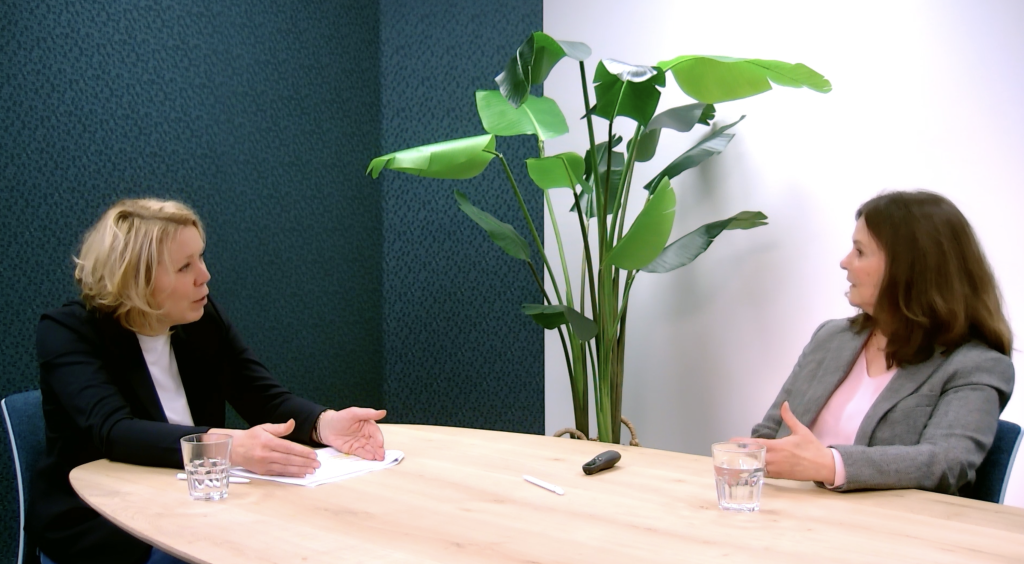Social safety underpinned by good leadership
Ever since undesirable behaviour has started to be exposed in the media world (The Voice of Holland, DWDD and broadcaster WNL), there has been a much greater focus on social safety within organisations. Rules and protocols have been established, but do they actually solve the problem? HumanCapitalCare’s ‘Social Safety’ webinar took a closer look at this contentious topic.

Annelies ‘t Hart, Senior Advisor Labour & Organisation (left) and Nicole Noyons, Psychologist (right)
Occurrence of undesirable behaviour
Having a handbook full of protocols is not enough, agrees Annelies ‘t Hart, Senior Advisor Labour and Organisation at HumanCapitalCare. Organisations sometimes tend to claim: “We never get any complaints about undesirable behaviour, so it’s not an issue with us.” According to ‘t Hart, that is a flawed assumption. Undesirable behaviour is everywhere – both in society and in work environments. Management teams simply need to promote their policy on social safety by example.
Confidential Counsellor Evelyne Gokke agrees: “You cannot say that no form of undesirable behaviour exists within an organisation. You see it in every industry. The management team always needs to stay vigilant in this regard. For example by properly training their managers.”
In her day-to-day work, Gokke sees that harassment is the most common form of undesirable behaviour. Those who report this behaviour suggest that managers are often let off the hook by keeping a lid on things. On the other hand, managers sometimes have a hard time knowing where to set boundaries. Some male executives no longer dare to compliment their female colleagues on their appearance, even if it may seem like an innocent gesture. Or some even avoid getting into lifts with them.
Nicole Noyons, Psychologist at HumanCapitalCare ended the webinar with a case study from her client Athora. This insurance company wants to raise awareness among its executives on the topic of social and psychological safety. Nicole Noyons organised a workshop where, in groups of twelve, leaders gained insight into the mechanisms present in their teams and their own role within this area. Social and psychological safety is something you create together, she concluded.
During the broadcast, moderators were on hand to answer questions. We selected a few of them:
What is the definition of a report? Isn’t it a kind of alert that the confidential counsellor receives?
That’s true, a report is definitely an alert that is received by the confidential counsellor by the reporter. The reporter always retains control and decides, for example, whether it remains a report or if there is follow-up (a session, complaint, etc.).
Are internal and external confidential counsellors equally effective? In other words, do employees also feel safe with their own employer’s internal confidential counsellor?
We merken dat dit per medewerker verschillend is. Daarom adviseren wij vaak aan organisaties gebruik te maken van een interne en externe vertrouwenspersoon, zodat medewerkers kunnen kiezen. Daarbij maken we de de kanttekening dat een interne vertrouwenspersoon geen HR of management functie bekleedt en dat er, indien haalbaar, zowel een man als vrouw als interne vertrouwenspersoon wordt aangesteld.
What happens if someone wants to report a situation anonymously. How can it then be resolved?
Anonymity always has to be guaranteed, but as a confidential counsellor, you always discuss with the reporter where the need lies and how it can be resolved. However, with the consent of the reporter, the confidential counsellor can escalate the situation while also ensuring anonymity.
This can sometimes get complicated, but if the reporter agrees to make it specific, it is possible. Another thing to try as a confidential counsellor is to see if the reporter may want to break their anonymity. But the reporter is unwilling to do so... then their choice prevails.
We need to start working on the social safety protocol in our organisation. What contributions can you make here?
HumanCapitalCare heeft een aantal tools in huis die onze opdrachtgevers helpen om een sociaal veilig werkklimaat te creëren. Denk aan:
- HumanCapitalCare has a number of tools to help our clients create a socially safe working environment. Examples include:
- Identifying social risks by providing insight into how socially safe employees actually feel.
- Developing/advising on policy regarding psychosocial workload (PSA), such as drafting protocols for undesirable behaviour. This makes it clear what behaviour is acceptable and how to deal with reports.
- Guidance/support for employees dealing with unsafe social situations, e.g. through the use of a confidential counsellor.
- Providing training and information to managers on social and psychological safety, creating an open and safe corporate culture.
Webinar & PowerPoint presentation
The video of the webinar and the PowerPoint presentation can be found below:
PowerPoint-presentation:
Video webinar: